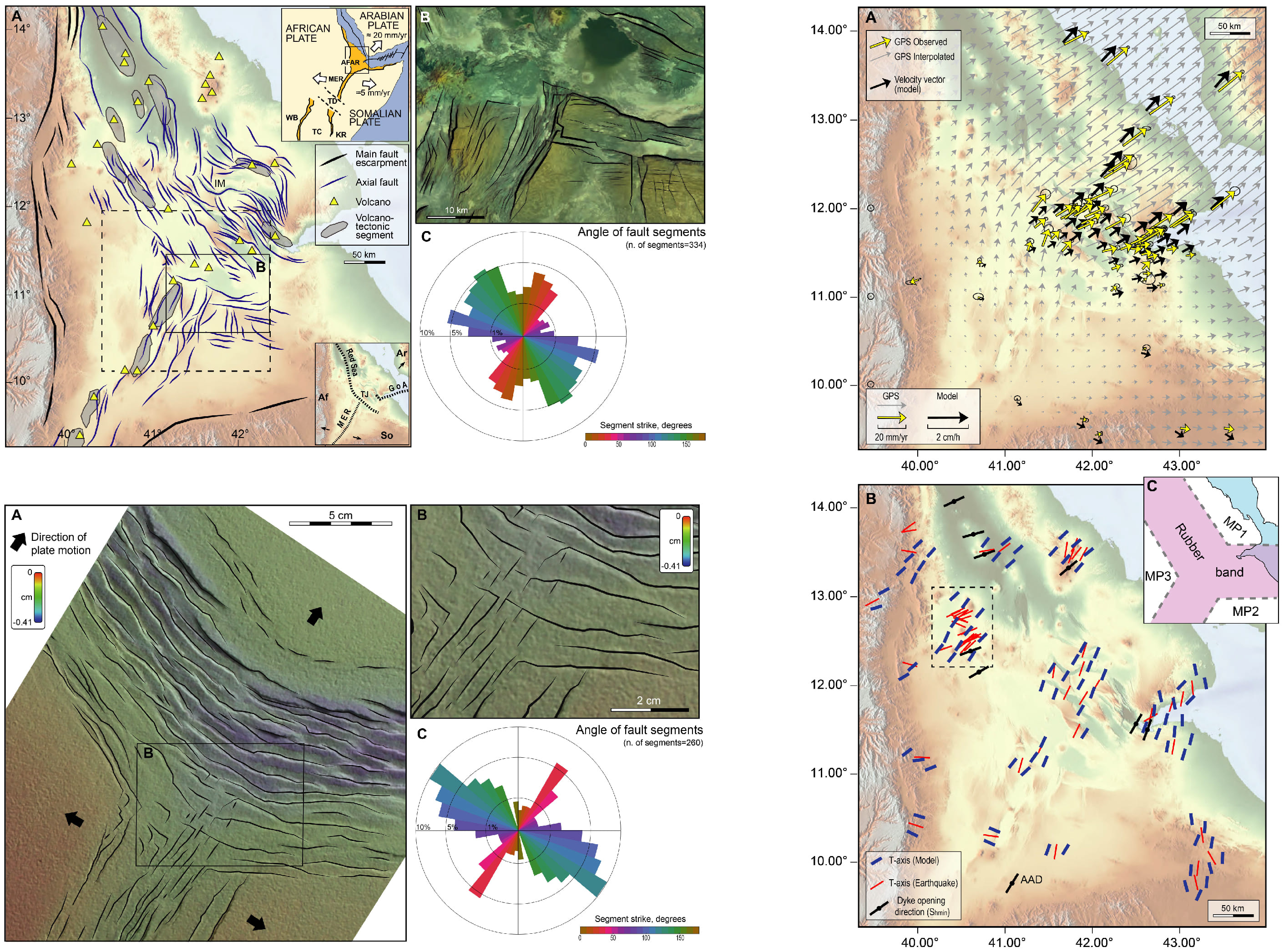NEW STUDY ON TRIPLE JUNCTIONS OF LITHOSPHERIC PLATES PUBLISHED IN GEOLOGY
An international research team, coordinated by researchers of CNR-IGG and the University of Florence, has published a new study in Geology on extensional triple junctions, areas in which three lithospheric plates diverge from each other and interact giving rise to complex deformation patterns. More specifically, the study has integrated results of analogue models performed at the Tectonic Modelling Laboratory of Florence with geodetical observations and seismicity data from the Afar triple junction, in Ethiopia, where the African, Arabian and Somalian plates diverge. This region hosts the only subaerial extensional triple junction on Earth, therefore representing an ideal locale to study these complex aspects of plate tectonics. The work has provided for the first time a detailed explanation for the development of the atypical fault patterns that characterise these complex regions and how these structural features evolve with time.
Bibliographic reference
Maestrelli D., Sani F., Keir D., Pagli C., La Rosa A., Atnafu Muluneh A., Brune S., Corti G. (2024). Reconciling plate motion and faulting at a Rift-Rift-Rift triple junction. Geology, https://doi.org/10.1130/G51909.1
For information: Giacomo Corti, CNR-IGG (giacomo.corti@igg.cnr.it)
